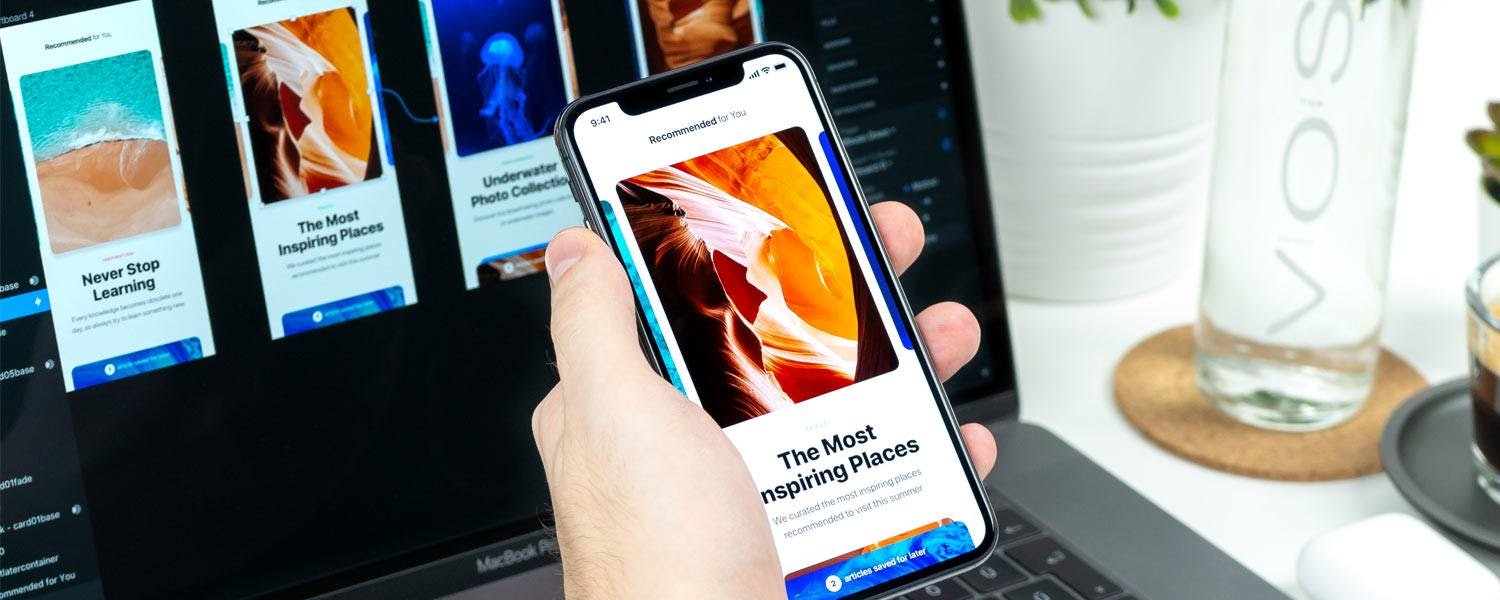User experience (UX) design is the process of creating products that provide meaningful and relevant experiences to users. This involves the design of the entire process of acquiring and integrating the product, including aspects of branding, design, usability, and function.
The Interaction Design Foundation
Most people who work in the digital space these days seem to understand that user experience is important. But a lot don’t get why it’s important, or what it even really means (that’s why I started this blog out with a handy definition, just in case). UX isn’t just building a prettier website. It’s a discipline of design that borders on the scientific, and allows us as marketers to provide users with exactly what they need and want at the right time and in the right place.
Let’s take a look at what exactly UX design is, what a designer does, and why the heck you should care about any of it.
What Is UX Design?
UX design can be hard to describe because the term is often used interchangeably with UI (user interface) design. UX is defined more by the overall planning, strategy, and psychology of the user experience and concentrates less on the product; on the other hand, UI design focuses more on the aesthetic of the product. The job of a UX designer is to determine what, when, where, who, why, and how a user interacts with a product. They ask a lot of questions like “what is the goal of the user when he/she enters our website?” or “why would the user click in a specific area or interact with that particular content?” or “what might confuse a user?”
The Role of a UX Designer
UX designers can’t only focus on what the user wants—they also need to help the organization achieve its goals. Essentially, a UX designer is the mediator between business needs and user needs. But don’t forget that “user” is right there in the title—for a UX designer, the user does still come first. To meet both sets of needs, they use a method called a “user-centered design process.” This process uses a set of tools to take the user’s requirements into account at every stage of a product’s life cycle. These phases apply to a spectrum of products, from web apps to physical products.
The work of a UX designer can vary on a day-to-day basis and is dependent on their organization. With this diversity in mind, there are some general operations and tasks a UX designer is expected to be able to do no matter what they’re working on.
User research
This is considered to be the starting point for all UX designers. They collect data from the target market and users through personal interviews, surveys, focus groups, and competitive analysis. All of the user/target market data obtained allows designers to avoid assumptions, and it helps the designer understand industry standards. User research is vital in providing insights to gain a competitive advantage and improve current processes.
Creating scenarios and user personas
Based on prior product research, UX designers can create fictional profiles that represent essential user groups. The personas tell us who our audience is, what they need, and how they might get there. Knowing who we’re talking to is a massive boon—it’s hard to know what kind of experience the user is looking for if we don’t know anything about them. These personas aid the designer in determining how to get different types of user to their desired destinations within the product.
User flows or information architecture
This is the creation of the structure for an app, website, or digital product. The information architecture is the actual structural design behind the product, and the user flow is the path a typical user takes from landing on the site or in the app until they reach their goal. User flows are basically a map or blueprint for users, the way they understand where they are in the product and how to get to the information they find relevant to them. For obvious reasons, these are bread-and-butter tools for UX designers.
Why Should I Care About UX?
There are a few reasons why UX is becoming increasingly important as the web experience overall evolves. First of all, lots of companies are unknowingly using UX design already. You’re thinking about the things your users want and trying to provide them in your digital space—you just aren’t necessarily following a set process. Understanding how to do UX in a process is a lot more efficient and more likely to deliver positive results. It gives you further knowledge on how to reach your users, and will allow for continuous improvement in your product.
Also, the user-centered design process that we talked about earlier is similar to the scientific method. You analyze, hypothesize, and experiment based on the data you have collected—tools such as user testing, scenarios, and wireframes are used to examine a hypothesis. This somewhat regimented process helps ensure you’re not making UX decisions simply based on guesswork. You have information to base your decision-making on, and that means you’re more likely to succeed.
Finally, quality UX design is attainable, especially for those who are already technically savvy. If you have spent a fair amount of your life interacting with websites, apps, games, and other digital media, UX might be second nature when you stop to think about the psychology of how you engage with a product. Once you realize that, you can use it to inform your decision-making on how to design with your user in mind. In other words, if you’re a “user” yourself, it’s a lot easier to know what a user might like. You can simply put yourself in their shoes.
Everything is changing. UX is how you keep up.
The world of product design is an ever-changing landscape. The needs and behaviors of people change as time goes on, and as the ways they/we interact with digital products evolve. UX design is, therefore, an imperative and integral part of any successful project. It allows you to go past the surface level and take a deep dive into the wants and needs of your users, which in turn helps build a stronger relationship between them and your business by providing them what they want and need faster and easier than ever before.
Did this pique your interest? Do you want to learn more about UX design? We have created a glossary just for you, covering everything from the basics of UX to more technical developer terms.





